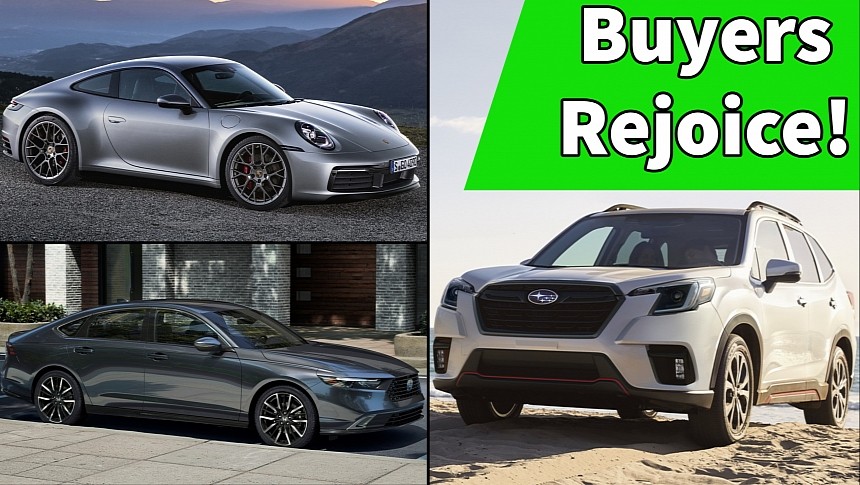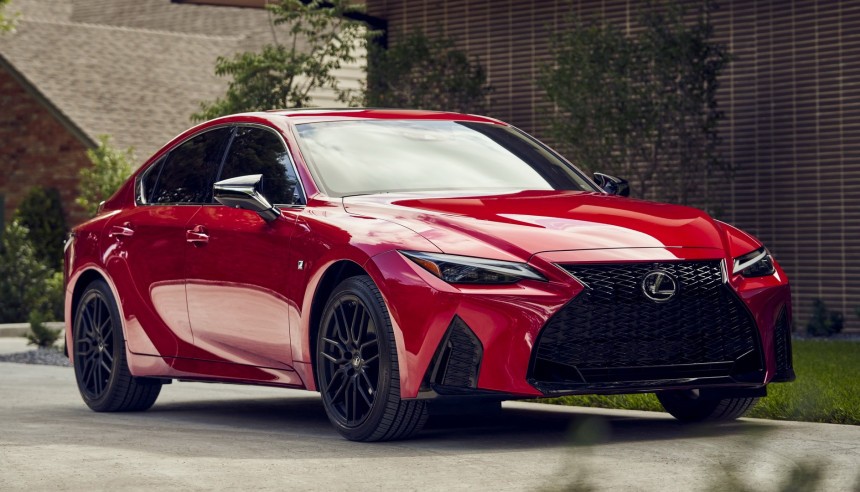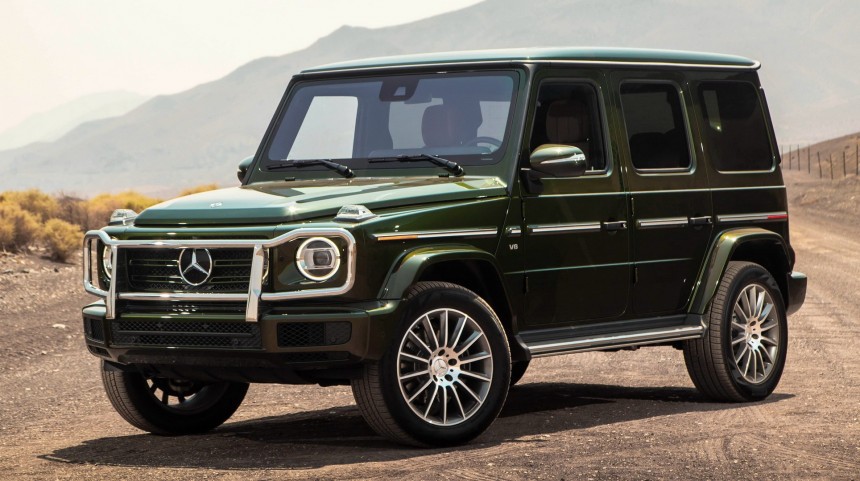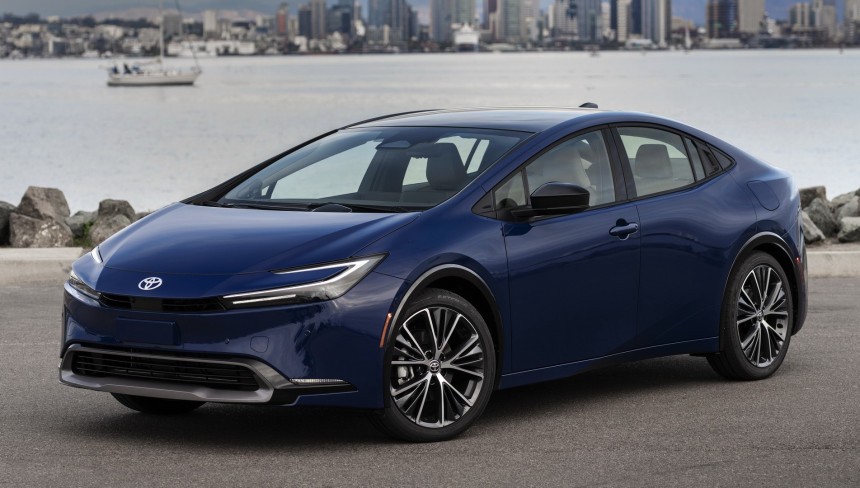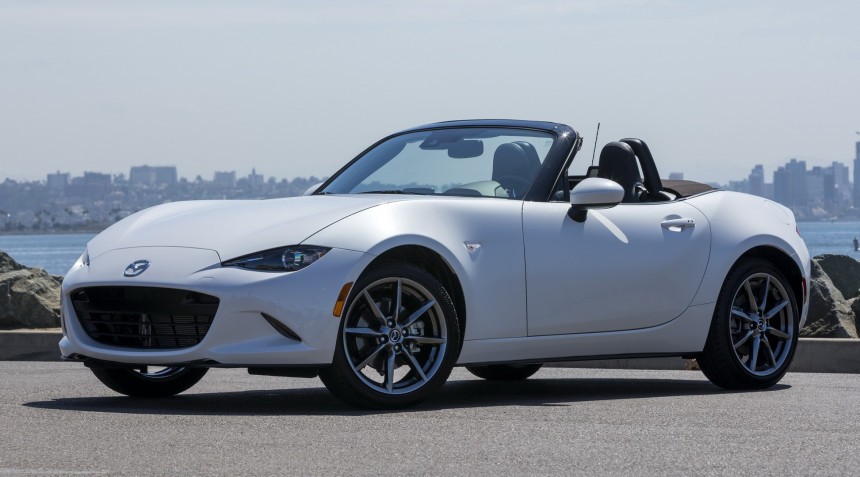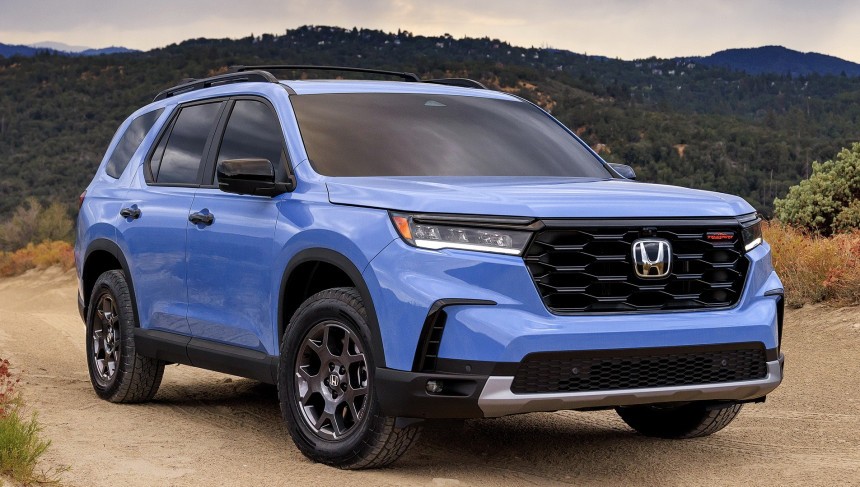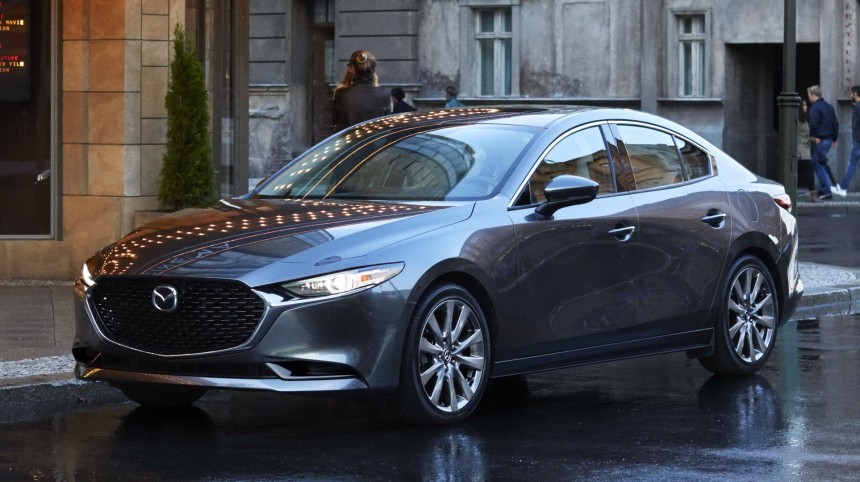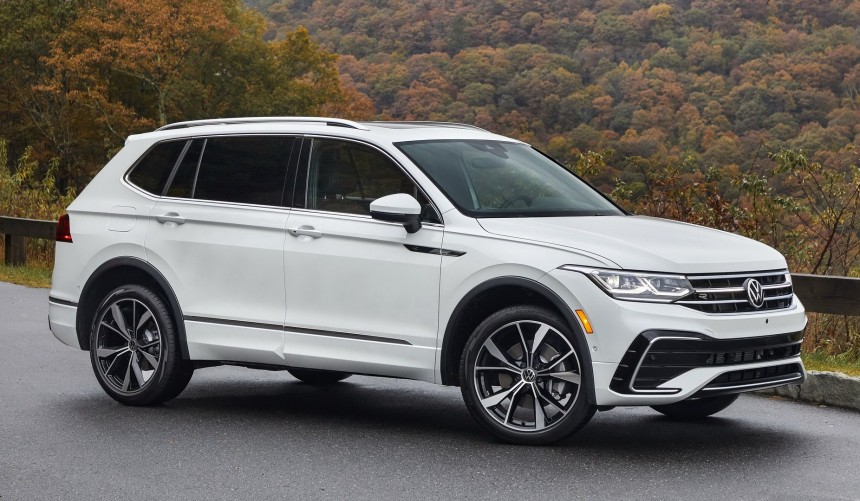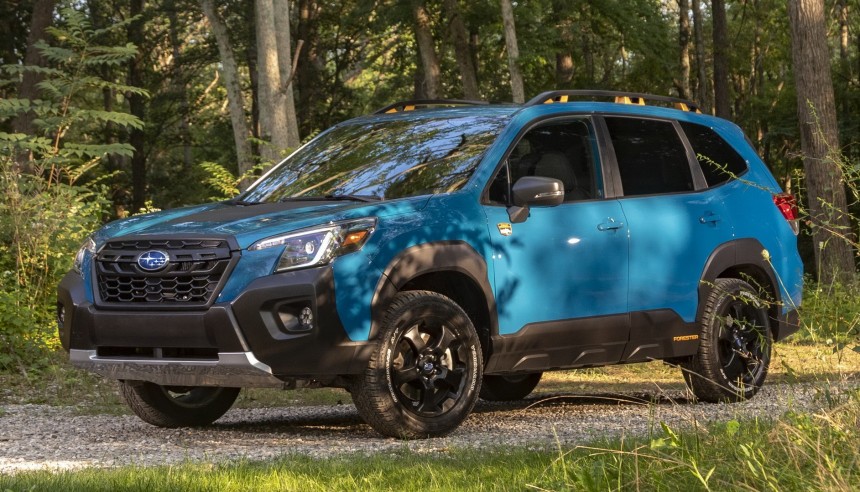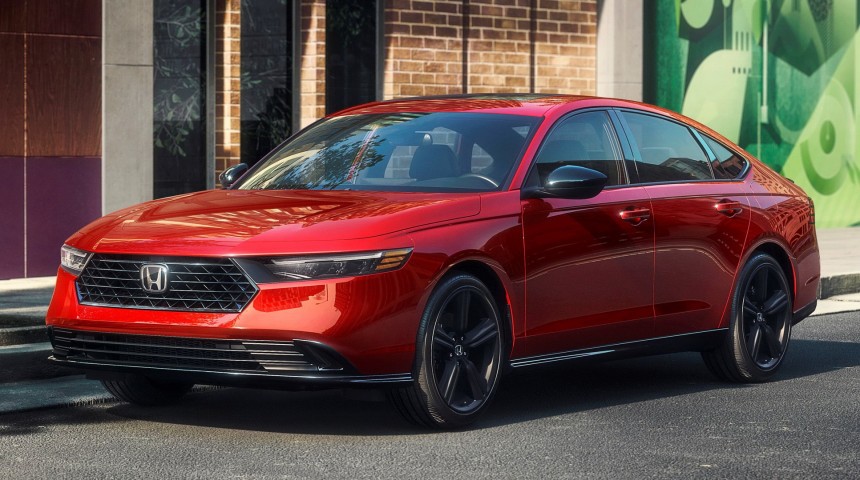Last week we brought you our top 10 cars and SUVs with the worst resale value and this time around, we’re going to be looking at their exact opposites. There are fewer surprises on this list, which makes perfect sense once you stop and think about it.
Technically, there are one or two head-scratchers, but nothing that’s going to make you rage-quit your browser in the middle of all this.
Again, we’ll be looking at depreciation for both regular and premium passenger cars and SUVs over a period of five years. Rest assured that we’ll be doing the same for pickup trucks soon enough – but for now, they’ve been omitted from these lists.
Without further ado, let’s just jump straight into it and look at car no.10 on our list. We’ll be counting down from good to great, concluding with a vehicle that is an absolute champion when it comes to depreciation.
No. 10 provides us with our first head-scratcher, possibly, especially since the current-generation IS has been on sale for roughly 10 years. However, its presence on this list goes to show just how extensive that 2020MY update was. If you didn’t know any better, you’d think it was a brand-new car and to most people, it probably comes off just like that.
On paper, the Lexus IS isn’t much of a novelty. Deep underneath, it’s the same third-gen car that was unveiled back in 2013. That being said, the update from 2020 was so extensive, it has helped the IS retain its pride, so to speak, remaining a desirable product to this day.
The 2020 update included different bodywork, revised suspension, new headlights and taillights, different grille, updated interior, Apple CarPlay and Android Auto capabilities, standard blind-spot monitoring and other upgraded driver-assistance systems.
With that in mind, if you purchase a brand-new 2023 Lexus IS today, which will set you back upwards of $41,735, it’s likely that in about five years' time, the car will still be worth approximately 80% of what it was worth before you drove it off the lot. Those are some exceptional residuals, especially for a sports sedan of the premium variety.
The G-Class is such a wonderful thing. Really, it is. Its design belongs to just about any era and its off-roading capabilities are top notch. Nowadays, it’s considered a luxury product more so than ever and Mercedes are right to take things in stride and milk this vehicle’s popularity for all it’s worth.
Prices in the U.S. start from no fewer than $139,900, which lands you the entry-level G 550 model, whereas the Mercedes-AMG G 63 variant costs just over $180,000. In Europe, you can also get a diesel-powered model for a little over 118,000 euros, or $130,000. It’s certainly very expensive and if you’re looking at it through SUV-colored glasses, the G-Class most definitely isn’t better at its job than say, the considerably cheaper GLE.
However, you don’t buy a G-Class just for the sake of practicality, but rather as a statement. It’s a luxury item, and a rather competent one. The fact that its five-year residuals are a whopping 82.13% as per CarEdge, makes perfect sense. A financially savvy person could theoretically keep leasing G-Wagons indefinitely.
Meanwhile, people who don’t care a lot about residuals and can afford the flagship AMG spec model, will oftentimes install custom body kits courtesy of some of the world’s most prestigious tuning firms. Those monsters are usually in very high demand on the used car market.
We’re approaching some really ridiculous residuals here with our no. 8 pick, which by the way does come a little bit as a surprise. Yes, the Prius is a reliable, popular and eco-friendly stalwart in this industry, but tech-wise, the best you can do is a plug-in hybrid – which would be the Prius Prime, priced from $32,350 in the United States.
The entry-level Prius, a regular hybrid vehicle, has a starting MSRP of $27,450. Why on Earth these vehicles would hold 85% residuals after five years is baffling, don’t you agree? We’re all going electric anyway, and in about five years, very few carmakers will even sell you traditional hybrids anymore (if any), with plug-in hybrids next in line to go extinct.
Anyway, this is more of a prediction than anything else: the Prius’ legacy status is what has helped it cement these impressive residuals in the past, but come the near future, prices could plummet on used examples. You’ve been warned.
Otherwise, Toyota did a very solid job with this fifth-generation Prius. It was unveiled in November of last year and from a visual standpoint, it represents a massive upgrade over any and all predecessors. If you’re just looking to upgrade from a fourth-gen to a fifth-gen model, you’ll be pleased with the result. Maybe just get rid of it before Tesla comes out with a sub-30,000 EV.
We can’t say a single bad thing about the MX-5. It’s an icon. It’s the ultimate affordable sports car, with prices starting from $28,050 for the regular model. The RF, on the other hand, starts from $35,750, although you should be perfectly happy with the entry-level ‘Sport’ specification too – it has things like Apple CarPlay and Android Auto integration, Blind Spot Monitoring and 16-inch black alloy wheels.
Anyway, the MX-5's residuals over five years should hold steady at around 85.80%, despite this current fourth-generation model having been in production for roughly 8 years now.
You know what’s great for residual value? Sinking your fangs into a segment and basically controlling the supply of reasonably priced roadsters in perpetuity. Think about it, what other convertible/roadster are you going to get for that money that’s so lightweight, agile and cheap? Not the Camaro Cabriolet, and certainly not the Toyota GR86 or the Subaru BRZ, which aren't even convertibles. It used to be the Fiat 124 Spider, but production on those for the U.S. was shut down back in 2020.
So, there you have it. Buying an MX-5 is a financially sound decision, even with long-term ownership – and the best part is that you will be genuinely (and dynamically) entertained while behind the wheel.
The fourth-generation Honda Pilot is a beast, residually speaking. America loves it and judging by the numbers, it loves you back.
It just edged out the Toyota Highlander for a spot on our list, and while both models are deserving of a place here, keep in mind that we’re going for a little diversity. The more segments we touch on, the better. Anyway, with the Pilot, you’re looking at an 85.95% retained value over five years, whereas the Highlander stood at 85.77%. Pretty much identical, but we had to go with the higher number, obviously.
The 2023 Honda Pilot came out last year and didn’t miss a beat sales-wise. It doesn’t move as much “product” as the Highlander, but it’s still one of the most popular mid-size SUVs on sale today, along with the previously mentioned Toyota and the Ford Explorer.
Prices start from $36,300, which lands you the entry-level LX specification, featuring a 285 horsepower V6 engine, 18-inch alloy wheels, Honda Sensing, Smart Entry with Walk Away Auto Lock, Hill Descent Control, AWD, a Multi-Angle Rearview Camera and a great deal more, all standard.
If you don’t mind overspending on a non-premium mid-size SUV, you can always go all out for the Elite specification, which adds heated and ventilated front seats, heated second row captain’s chairs, a head-up display, panoramic roof, hands-free power tailgate and more, for just over $52,000.
In terms of non-premium compact hatchbacks and sedans, the Mazda3 is currently busy strutting its stuff, looking sharp and desirable for buyers of all ages. With 86.13% five-year residuals, it just goes to show how much people like this latest design language from the Japanese carmaker.
To be fair, the Honda Civic is not far behind, but again, we had to go with the numbers and the Mazda just edged out its no.1 rival – although in terms of sales, the Civic wins convincingly, trailing only the Toyota Corolla for segment domination.
Now in its fourth generation, the Mazda3 can be had both as a sedan and a five-door hatchback, and for the 2024 model year, prices kick off from $24,170. MY2024 Hatchback models got here first (summer 2023), with sedan variants joining them in dealerships this fall.
Still, as good and as popular as the Mazda3 may be, we can’t help but wonder what the future holds for these types of compact vehicles, once carmakers begin electrifying the segment properly. They’ll have to evolve, or die, and the same goes for the Honda Civic and the Toyota Corolla. The day will come when none of these models will sip gasoline, and in turn, this will have a considerable effect on the used car market. In other words, the strong residuals of today can be the plummeting residuals of tomorrow.
When we did our Cars, Trucks & SUVs you should definitely avoid buying in 2023 top 10 a couple weeks back, one of the crossovers we discussed was the Volkswagen Taos, which despite it not being a bad car, per se, the fact that you can get a Tiguan for nearly the same money, basically renders the former obsolete.
At first, I was surprised to see the Tiguan do so well in terms of residuals – 87% is a strong number, especially for a crossover that’s been in production since 2016 (the facelift wasn’t that extensive). Having said that, it just goes to show how good this V-Dub really is, overall. Personally, I’ve yet to meet a Tiguan owner complaining about his or her ride, as long as it’s the second-gen model we’re talking about.
On paper, the 2023 Tiguan offers tremendous value for money, with prices starting from just $26,950. In exchange for that sum, you get Front Assist and Blind Spot Monitor, heated front seats, an 8-inch digital instrument cluster, LED headlights and taillights, Keyless Access, 3rd-row seating and more, at no extra cost. Basically, the price is good, the specs are good, and so are build quality and driving dynamics.
It may be somewhat bland in nature, but the Tiguan makes for a solid purchase. You can take that to the bank.
The Forester is another industry stalwart, a borderline cult classic, if you will. Subaru owners love their cars and for good reason. They’re reliable, practical, safe and competitively priced.
Now in its fifth generation, the so-called SK Forester can be had from $26,495 in the United States, which technically means it’s a VW Tiguan competitor, even though the Scooby is usually seen as a more rugged-style crossover, less reliant on the beaten paths where you might find most Tiguan owners.
Even with the ‘Base’ Forester, you still get standard EyeSight Drive Assist tech, Apple CarPlay and Android Auto integration, LED headlights, a rear seat reminder system, 74.2 cubic feet of cargo volume and an impressive 8.7 inches of ground clearance. If you get the more expensive Wilderness trim, those 8.7 inches turn into 9.2 inches thanks to the raised suspension. You can do some proper off-roading that way.
Funny enough, you can actually top that for less money than what you’d spend on a Forester Wilderness ($34,320). Just get a 2023 Jeep Wrangler, as it comes with a starting MSRP of $31,195 and 9.7 inches of ground clearance.
Regardless, the Forester boasts 87.09% five-year residuals and that’s what we should be focusing on here. People clearly respect these vehicles, and when the people speak, the markets listen.
If we go by internal designation, there have been a total of eight generations of the Porsche 911, culminating in this latest one, the 992, introduced back in 2019.
Throughout its history, the 911 has stood as the quintessential luxury sports car, unburdened by desperately trying to always look “cool”, like a Ferrari or a Lamborghini. No, the 911 was only interested in doing its job perfectly from a driving dynamics standpoint, leaving the flamboyancy to its rivals – sort of like the Tim Duncan of the automotive world.
The Porsche 911 also happened to come in fifth at the Car of the Century awards from 1999, losing out to the Ford Model T, the Mini, the Citroen DS and the Volkswagen Beetle, ironically. Still, seeing as how all those other automotive icons were affordable and versatile, whereas the 911 not so much, the latter’s presence on that list is nothing short of astounding, and a testament to its excellence.
Speaking of lists, the 911 almost topped ours, with regards to resale value, rocking 87.20% residuals. Now that’s what we call successful. A true depreciation champ, nearly unaffected by the inevitable passage of time. Oh, and in case you’re wondering, the Porsche 911 is a real trooper regardless of how long the ownership period is, coming in at 93.97% over three years and 83% over seven years.
Pricing in the U.S. starts from $114,400 for the entry-level 911 Carrera Coupe.
This is a little anticlimactic, yes. Who could have predicted that a Honda Accord would top this list, except for pretty much all of you, probably. But hey, it is what it is.
The Accord is, simply put, stupid popular and ridiculously good at its job, not unlike its main rival, the Toyota Camry, except that the Camry has already been around for six years in its current XV70-iteration, whereas the eleventh-generation Accord was unveiled just last year.
It makes perfect sense for it to edge out the Toyota in terms of residuals, holding on at 88% over five years. Even the tenth-generation model kicked some serious behind, especially after its facelift from 2021 – that's when we saw the revised grille, new wheels, updated LED headlights, Apple CarPlay and Android Auto standard on all trims, plus the discontinuation of the manual gearbox, which let’s face it, was a long time coming.
All you need to know is that you simply can’t go wrong with buying a 2023 Honda Accord, as long as you genuinely need a midsize sedan. The sad truth is that nowadays, people don’t really “need” four-door sedans anymore, seeing as how crossovers tend to be a lot more practical from pretty much any standpoint.
Regardless, the Accord, which you can get from upwards of $27,295, is still a heck of a car, and it’ll be a while before its value begins to dwindle.
Again, we’ll be looking at depreciation for both regular and premium passenger cars and SUVs over a period of five years. Rest assured that we’ll be doing the same for pickup trucks soon enough – but for now, they’ve been omitted from these lists.
Without further ado, let’s just jump straight into it and look at car no.10 on our list. We’ll be counting down from good to great, concluding with a vehicle that is an absolute champion when it comes to depreciation.
#10. Lexus IS
On paper, the Lexus IS isn’t much of a novelty. Deep underneath, it’s the same third-gen car that was unveiled back in 2013. That being said, the update from 2020 was so extensive, it has helped the IS retain its pride, so to speak, remaining a desirable product to this day.
The 2020 update included different bodywork, revised suspension, new headlights and taillights, different grille, updated interior, Apple CarPlay and Android Auto capabilities, standard blind-spot monitoring and other upgraded driver-assistance systems.
With that in mind, if you purchase a brand-new 2023 Lexus IS today, which will set you back upwards of $41,735, it’s likely that in about five years' time, the car will still be worth approximately 80% of what it was worth before you drove it off the lot. Those are some exceptional residuals, especially for a sports sedan of the premium variety.
#9. Mercedes-Benz G-Class
Prices in the U.S. start from no fewer than $139,900, which lands you the entry-level G 550 model, whereas the Mercedes-AMG G 63 variant costs just over $180,000. In Europe, you can also get a diesel-powered model for a little over 118,000 euros, or $130,000. It’s certainly very expensive and if you’re looking at it through SUV-colored glasses, the G-Class most definitely isn’t better at its job than say, the considerably cheaper GLE.
However, you don’t buy a G-Class just for the sake of practicality, but rather as a statement. It’s a luxury item, and a rather competent one. The fact that its five-year residuals are a whopping 82.13% as per CarEdge, makes perfect sense. A financially savvy person could theoretically keep leasing G-Wagons indefinitely.
Meanwhile, people who don’t care a lot about residuals and can afford the flagship AMG spec model, will oftentimes install custom body kits courtesy of some of the world’s most prestigious tuning firms. Those monsters are usually in very high demand on the used car market.
#8. Toyota Prius
The entry-level Prius, a regular hybrid vehicle, has a starting MSRP of $27,450. Why on Earth these vehicles would hold 85% residuals after five years is baffling, don’t you agree? We’re all going electric anyway, and in about five years, very few carmakers will even sell you traditional hybrids anymore (if any), with plug-in hybrids next in line to go extinct.
Anyway, this is more of a prediction than anything else: the Prius’ legacy status is what has helped it cement these impressive residuals in the past, but come the near future, prices could plummet on used examples. You’ve been warned.
Otherwise, Toyota did a very solid job with this fifth-generation Prius. It was unveiled in November of last year and from a visual standpoint, it represents a massive upgrade over any and all predecessors. If you’re just looking to upgrade from a fourth-gen to a fifth-gen model, you’ll be pleased with the result. Maybe just get rid of it before Tesla comes out with a sub-30,000 EV.
#7. Mazda MX-5 Miata
Anyway, the MX-5's residuals over five years should hold steady at around 85.80%, despite this current fourth-generation model having been in production for roughly 8 years now.
You know what’s great for residual value? Sinking your fangs into a segment and basically controlling the supply of reasonably priced roadsters in perpetuity. Think about it, what other convertible/roadster are you going to get for that money that’s so lightweight, agile and cheap? Not the Camaro Cabriolet, and certainly not the Toyota GR86 or the Subaru BRZ, which aren't even convertibles. It used to be the Fiat 124 Spider, but production on those for the U.S. was shut down back in 2020.
So, there you have it. Buying an MX-5 is a financially sound decision, even with long-term ownership – and the best part is that you will be genuinely (and dynamically) entertained while behind the wheel.
#6. Honda Pilot
It just edged out the Toyota Highlander for a spot on our list, and while both models are deserving of a place here, keep in mind that we’re going for a little diversity. The more segments we touch on, the better. Anyway, with the Pilot, you’re looking at an 85.95% retained value over five years, whereas the Highlander stood at 85.77%. Pretty much identical, but we had to go with the higher number, obviously.
The 2023 Honda Pilot came out last year and didn’t miss a beat sales-wise. It doesn’t move as much “product” as the Highlander, but it’s still one of the most popular mid-size SUVs on sale today, along with the previously mentioned Toyota and the Ford Explorer.
Prices start from $36,300, which lands you the entry-level LX specification, featuring a 285 horsepower V6 engine, 18-inch alloy wheels, Honda Sensing, Smart Entry with Walk Away Auto Lock, Hill Descent Control, AWD, a Multi-Angle Rearview Camera and a great deal more, all standard.
If you don’t mind overspending on a non-premium mid-size SUV, you can always go all out for the Elite specification, which adds heated and ventilated front seats, heated second row captain’s chairs, a head-up display, panoramic roof, hands-free power tailgate and more, for just over $52,000.
#5. Mazda3
To be fair, the Honda Civic is not far behind, but again, we had to go with the numbers and the Mazda just edged out its no.1 rival – although in terms of sales, the Civic wins convincingly, trailing only the Toyota Corolla for segment domination.
Now in its fourth generation, the Mazda3 can be had both as a sedan and a five-door hatchback, and for the 2024 model year, prices kick off from $24,170. MY2024 Hatchback models got here first (summer 2023), with sedan variants joining them in dealerships this fall.
Still, as good and as popular as the Mazda3 may be, we can’t help but wonder what the future holds for these types of compact vehicles, once carmakers begin electrifying the segment properly. They’ll have to evolve, or die, and the same goes for the Honda Civic and the Toyota Corolla. The day will come when none of these models will sip gasoline, and in turn, this will have a considerable effect on the used car market. In other words, the strong residuals of today can be the plummeting residuals of tomorrow.
#4. Volkswagen Tiguan
At first, I was surprised to see the Tiguan do so well in terms of residuals – 87% is a strong number, especially for a crossover that’s been in production since 2016 (the facelift wasn’t that extensive). Having said that, it just goes to show how good this V-Dub really is, overall. Personally, I’ve yet to meet a Tiguan owner complaining about his or her ride, as long as it’s the second-gen model we’re talking about.
On paper, the 2023 Tiguan offers tremendous value for money, with prices starting from just $26,950. In exchange for that sum, you get Front Assist and Blind Spot Monitor, heated front seats, an 8-inch digital instrument cluster, LED headlights and taillights, Keyless Access, 3rd-row seating and more, at no extra cost. Basically, the price is good, the specs are good, and so are build quality and driving dynamics.
It may be somewhat bland in nature, but the Tiguan makes for a solid purchase. You can take that to the bank.
#3. Subaru Forester
Now in its fifth generation, the so-called SK Forester can be had from $26,495 in the United States, which technically means it’s a VW Tiguan competitor, even though the Scooby is usually seen as a more rugged-style crossover, less reliant on the beaten paths where you might find most Tiguan owners.
Even with the ‘Base’ Forester, you still get standard EyeSight Drive Assist tech, Apple CarPlay and Android Auto integration, LED headlights, a rear seat reminder system, 74.2 cubic feet of cargo volume and an impressive 8.7 inches of ground clearance. If you get the more expensive Wilderness trim, those 8.7 inches turn into 9.2 inches thanks to the raised suspension. You can do some proper off-roading that way.
Funny enough, you can actually top that for less money than what you’d spend on a Forester Wilderness ($34,320). Just get a 2023 Jeep Wrangler, as it comes with a starting MSRP of $31,195 and 9.7 inches of ground clearance.
Regardless, the Forester boasts 87.09% five-year residuals and that’s what we should be focusing on here. People clearly respect these vehicles, and when the people speak, the markets listen.
#2. Porsche 911
Throughout its history, the 911 has stood as the quintessential luxury sports car, unburdened by desperately trying to always look “cool”, like a Ferrari or a Lamborghini. No, the 911 was only interested in doing its job perfectly from a driving dynamics standpoint, leaving the flamboyancy to its rivals – sort of like the Tim Duncan of the automotive world.
The Porsche 911 also happened to come in fifth at the Car of the Century awards from 1999, losing out to the Ford Model T, the Mini, the Citroen DS and the Volkswagen Beetle, ironically. Still, seeing as how all those other automotive icons were affordable and versatile, whereas the 911 not so much, the latter’s presence on that list is nothing short of astounding, and a testament to its excellence.
Speaking of lists, the 911 almost topped ours, with regards to resale value, rocking 87.20% residuals. Now that’s what we call successful. A true depreciation champ, nearly unaffected by the inevitable passage of time. Oh, and in case you’re wondering, the Porsche 911 is a real trooper regardless of how long the ownership period is, coming in at 93.97% over three years and 83% over seven years.
Pricing in the U.S. starts from $114,400 for the entry-level 911 Carrera Coupe.
#1. Honda Accord
The Accord is, simply put, stupid popular and ridiculously good at its job, not unlike its main rival, the Toyota Camry, except that the Camry has already been around for six years in its current XV70-iteration, whereas the eleventh-generation Accord was unveiled just last year.
It makes perfect sense for it to edge out the Toyota in terms of residuals, holding on at 88% over five years. Even the tenth-generation model kicked some serious behind, especially after its facelift from 2021 – that's when we saw the revised grille, new wheels, updated LED headlights, Apple CarPlay and Android Auto standard on all trims, plus the discontinuation of the manual gearbox, which let’s face it, was a long time coming.
All you need to know is that you simply can’t go wrong with buying a 2023 Honda Accord, as long as you genuinely need a midsize sedan. The sad truth is that nowadays, people don’t really “need” four-door sedans anymore, seeing as how crossovers tend to be a lot more practical from pretty much any standpoint.
Regardless, the Accord, which you can get from upwards of $27,295, is still a heck of a car, and it’ll be a while before its value begins to dwindle.
